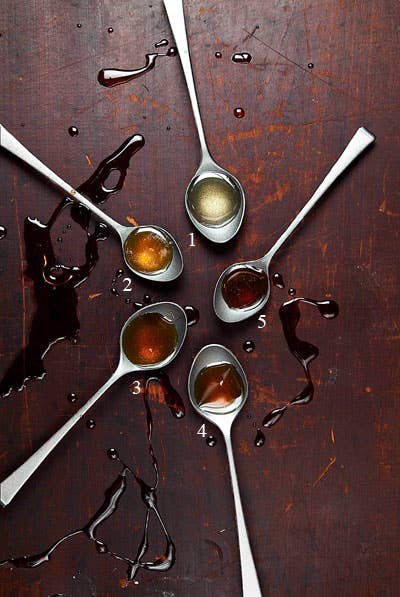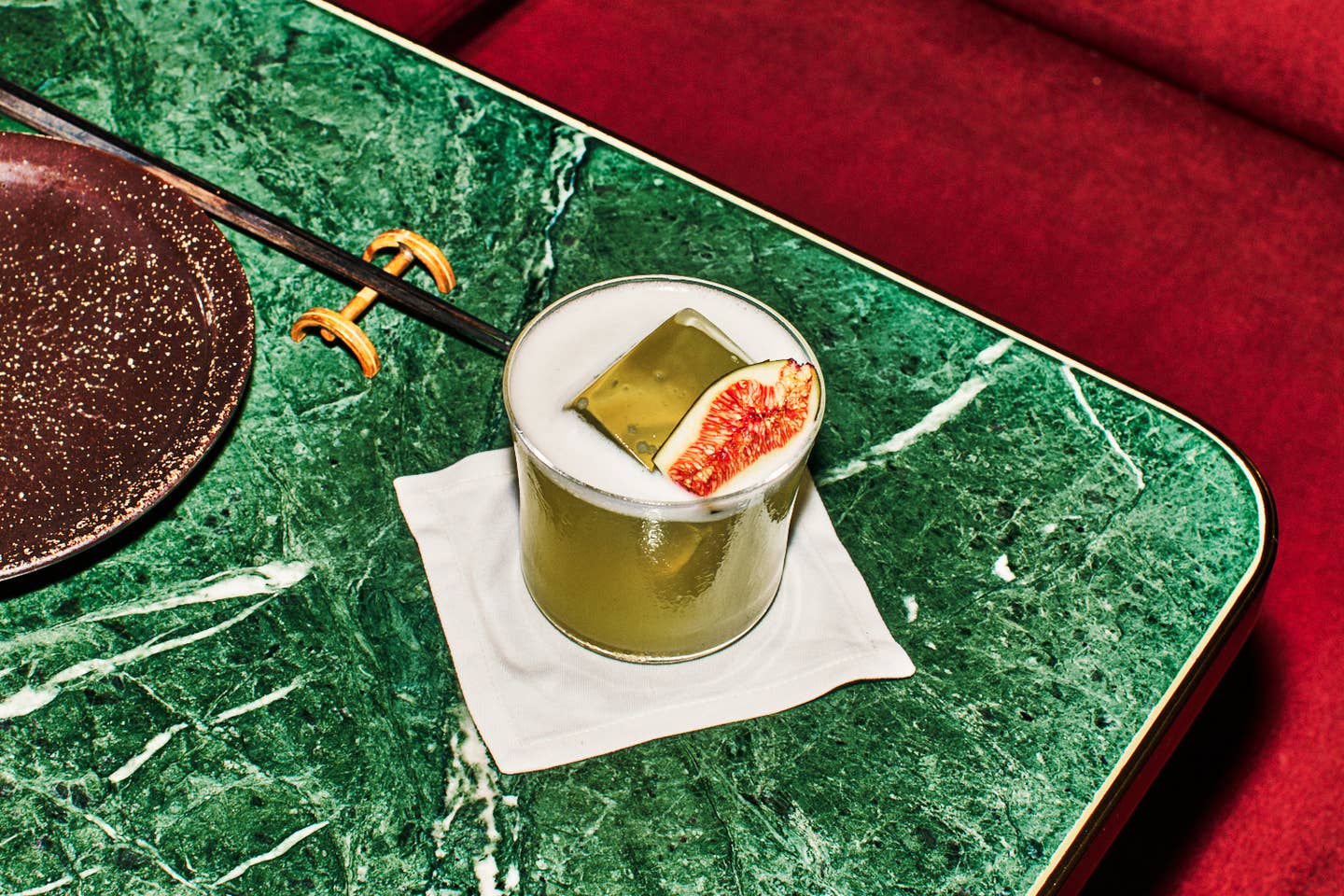
Making the Grade: the Canadian Maple Grading System
Maple syrup varies widely in color, from pale gold to cola-brown. The Canadian maple grading system distinguishes among them by categorizing syrups according to levels of transparency—No. 1 is the lightest, and No. 3 the darkest. The practice likely dates back to the 19th century, when maple was considered a cheaper alternative to cane sugar, and the flaxen syrups (which most resembled sugar) were the most desirable. While the grades do not indicate the syrup's quality, they do reflect a difference in taste. The fair syrups—Canada No. 1—are divided into three subgrades. Extra Light is fresh and elemental, and the nectarlike version from La Ferme Martinette [1] imparts a gentle sweetness to yogurt or ice cream. Light syrup is fruity and floral—the example from Domaine Acer [2], with hints of peach and vanilla, would complement the tartness of baked apples. Medium, the most popular grade, possesses archetypal maple flavor. The bottle from Sucrerie de la Montagne [3], which tastes of caramel, is ideal for griddle fare like waffles and French toast. The next grade, Canada No. 2 Amber, is spicy and rich. While a drizzle of Labonte's [4] would taste great on pancakes, it adds surprising depth to marinades and baked goods. The most intensely flavored, Canada No. 3 Dark, is rarely available in stores (most ends up in commercial foods), but some producers do sell it. The coffee-brown syrup from Shady Maple Farm [5] lends molasses flavor to meaty dishes, such as chili and home-cured bacon.
Keep Reading
Continue to Next Story










